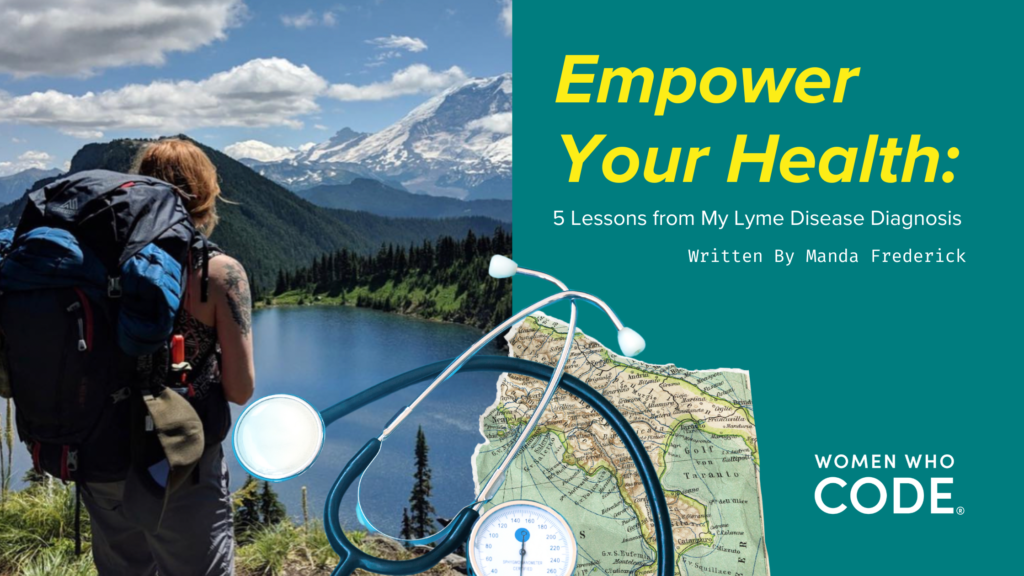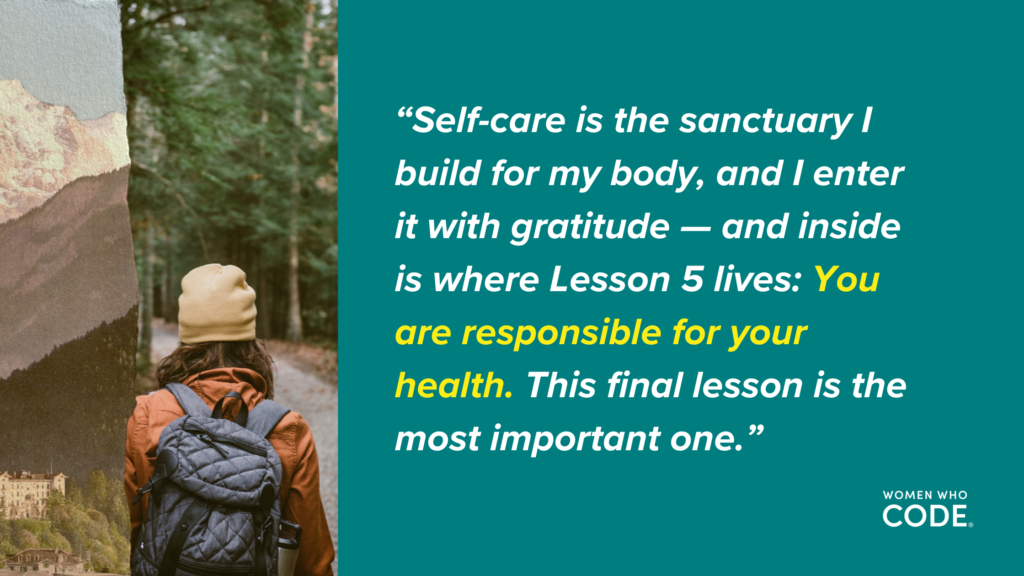Empower Your Health: 5 Lessons from My Lyme Disease Diagnosis
Written by Manda Frederick

There was a moment when my then-husband, Mike, and I were walking from our car to a grocery store. Mike was propping me up as we walked. I was exhausted and hurting, but I had insisted that I come. My health had been in decline for months, and we didn’t know why.
In my memory, in that parking lot, getting to the store was an act of slow motion: Mike holding me, I focused on every step, studying my feet as I walked, as though I could will them into motion, as though they weren’t mine. These weren’t the feet that ran half marathons, summitted snow caps in the Canadian Rockies, chased my cattle dog at full speed in an open field and almost caught him. These weren’t my feet.
For months, I ignored and excused my symptoms: The exhaustion? Long work days. The constant 100+ F fever? The Pennsylvania summer heat. Joint pain? The four-day backpacking trip we’d taken to the Adirondacks two months earlier. The constant bloody nose? Allergies.
This is Lesson 1: Do not ignore what your body is telling you. Studies consistently show that women neglect their own health, prioritizing others first, putting off preventative care, and ignoring symptoms until their condition is worse, requiring even more treatment. In my case, it was Mike who tenderly urged me to see a doctor one evening as he helped me up the stairs of our home; even then I didn’t go right away.
By the time I had gotten my Lyme disease diagnosis, the left side of my face was partially paralyzed — a symptom I couldn’t excuse by anything else. Despite having had four negative Lyme’s tests, I pushed my doctor to test one final time; once I had developed Bell’s palsy, the soft arc dragging down the left side of my mouth, I knew it was Lyme’s. At first, she refused. I insisted.
Lesson 2: Ask for the tests. Ask for whatever you think you need. Push for an answer. The gender gap we know in tech extends to medicine, with women’s health concerns or issues being more consistently dismissed, downplayed, gaslit, and underrepresented in medical research. For this reason, being a woman in the medical system is already a health risk. But you are not a burden. You are not paranoid. You are the only resident of your body, and only you know how it feels to live there.
And I was right.
After four weeks of antibiotics, the infection cleared, and my face regained movement. But after harboring the bacteria for nine months, my joints — all the parts that connect you and gift your body movement — were irreparably damaged. I was 28 years old.
Lesson 3 is one we already know but choose to ignore: The healthy body you may have now will not always be the body that you have. You do not have a backup body. And the one you have may simply slip away from you quietly one summer.

Most people don’t know that I live with a pain condition. It took me many years to even call it that — I thought young people don’t have pain conditions, and they certainly don’t pick them up camping. My social media paints a picture of a strong body — hiking, rock climbing, running. But in the negative of all those photos is pain. Pain is subjective and inhabits each of our frames so uniquely that there is no point trying to explain how it feels to you here.
What it looks like: Touching the elbow of a friend while we walk and shyly asking her to go slower. Limping for the first handful of steps when I rise from a seat. Laying bed-bound after a day of travel or shopping. Raising my palms defensively against a loved one who comes in for a hug. Canceling plans. Weeping in the middle of the gym. After nights of deteriorated sleep and mental fatigue, trying to work, thinking, “I cannot live and sit through this Zoom call.”
Maybe you’ve had your own version of this — a heavy shadow from grief or depression or stress or chronic illness — that makes everything harder. It’s in your body, everywhere, and all the time.
Lesson 4 was the hardest to learn: What you feel is valid even if others cannot see it. You can read that again if you need to.
Most days, I can do the things I want. It just hurts. But I’ve stayed active. I focus on mobility and strength. I’m also mindful of managing my stress, getting enough sleep, eating nourishing food, and leaning on holistic methods for pain alleviation. I am giving this version of my body its very best chance at a life.
Self-care is the sanctuary I build for my body, and I enter it with gratitude — and inside is where Lesson 5 lives: You are responsible for your health. This final lesson is the most important one.
There are many things that we cannot help that will affect our health and level of activity: genetics, accidents, environment, disability, illness, stress, depression, and more. Sometimes big things happen to you that affect your health in a big, visible way. Sometimes, a small insect bite you never feel changes you forever in a way no one else can see.
But self-care, as Lalah Delia reminds us, “is how you take your power back.”
Tech bestie to tech bestie: I urge you to think about your health and act on your body’s behalf — including your mental and emotional well-being. Thanks to our digital age, more resources are available to you than ever before, so I’ll just remind you of the lessons here: Listen to your body. Do not ignore what it is telling you. Advocate and take action for what it needs. Take proactive measures to safeguard the health you have. Develop wellness habits that work for you and commit to keeping them. Be responsible for your health. Start today. And remember: “Every act of self-care,” writes Susan Weiss Berry, “is a powerful declaration: I am on my side, I am on my side, each day I am more and more on my own side.”
Resources for Empowering Your Health
- Medical Symptoms That Women Should Not Ignore
- Communicating with Your Doctor
- Talking with Your Doctor or Healthcare Provider
- The Doctor Appointments Women Should Make Every Year
- Why Women’s Health Month Matters and How to Advocate for Your Care
- Don’t Get Dismissed: Women Should Advocate for Themselves with Their Doctors